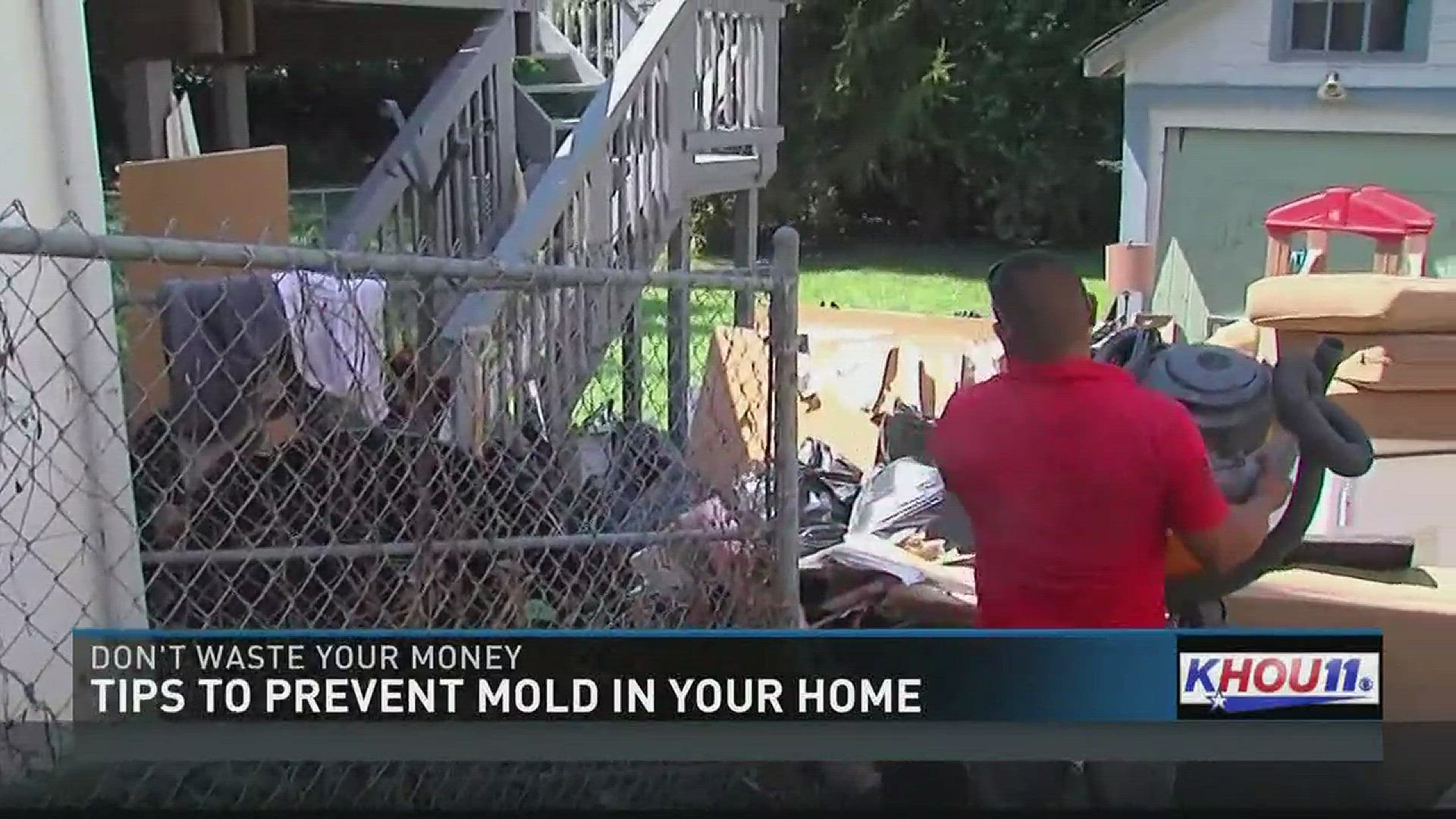HOUSTON -- More than two weeks after Harvey flooded the Houston area, some residents are just now getting back into their homes while others are still waiting to get in.
Here is some important advice for homeowners who are cleaning up and making repairs.
1. The most important thing is to act fast. Don’t wait for an adjuster or inspector to get there. If the power is out, the A/C is out, and that means it will be hot and humid. You are going to have microbial growth, you’re going to have pathogens, you’re going to have mold. It’s going to happen. It's important to get all wet items out of the home. (Take photos and video of the damage.)
2. It isn’t necessary to identify the type of mold in your home, and CDC doesn’t recommend routine sampling for mold. If you are susceptible to mold, there may be a health risk; therefore, no matter what type of mold is present, it needs to be removed.
3. According to FEMA, wood and upholstered furniture, and other porous materials can trap mold and may need to be discarded. Carpeting is a problem because drying it out does not remove mold spores. Carpets with mold and mildew should be removed.
4. Glass, plastic and metal objects and other items made of hardened or nonporous materials can often be cleaned, disinfected and reused.
5. After removing wet items, it's time to air out your home. Open windows for ventilation and wear rubber gloves and eye protection when cleaning. Consider using a mask rated N-95 or higher if heavy concentrations of mold are present.
6. Use a non-ammonia soap or detergent to clean all areas and washable items that came in contact with floodwaters.Mix 1-1/2 cups of household bleach in one gallon of water and thoroughly rinse and disinfect the area. Never mix bleach with ammonia as the fumes are toxic.
7. Cleaned areas can take several days to dry thoroughly. The use of heat, fans and dehumidifiers can speed up the drying process.
8. Check out all odors. It’s possible for mold to hide in the walls or behind wall coverings. Find all mold sources and clean them properly.
9. Remove and discard all materials that can’t be cleaned, such as wallboard, fiberglass and cellulose areas.
10. Clean the wall studs where wallboard has been removed, and allow the area to dry thoroughly. Despite a lot of rumors that you need to wait for a claims adjuster, it could actually make the problem worse and more expensive. Once mold arrives, it requires a certified mold inspection and takes much longer to clean.
11. The CDC warns you should be careful with bleach: "Many people use bleach to clean up mold. If you decide to use bleach, use it safely by wearing gloves, a mask, and goggles to protect yourself. Remember these four tips to stay safe: NEVER mix bleach with ammonia or any other cleaning product. ALWAYS open windows and doors when using bleach, to let fumes escape. NEVER use bleach straight from the bottle to clean surfaces. Use no more than 1 cup of bleach per 1 gallon of water when you’re cleaning up mold. If you are using stronger, professional strength bleach use less than 1 cup of bleach per gallon of water. ALWAYS protect your mouth, nose, skin, and eyes against both mold and bleach with an N-95 mask, gloves, and goggles. You can buy an N-95 mask at home improvement and hardware stores."


